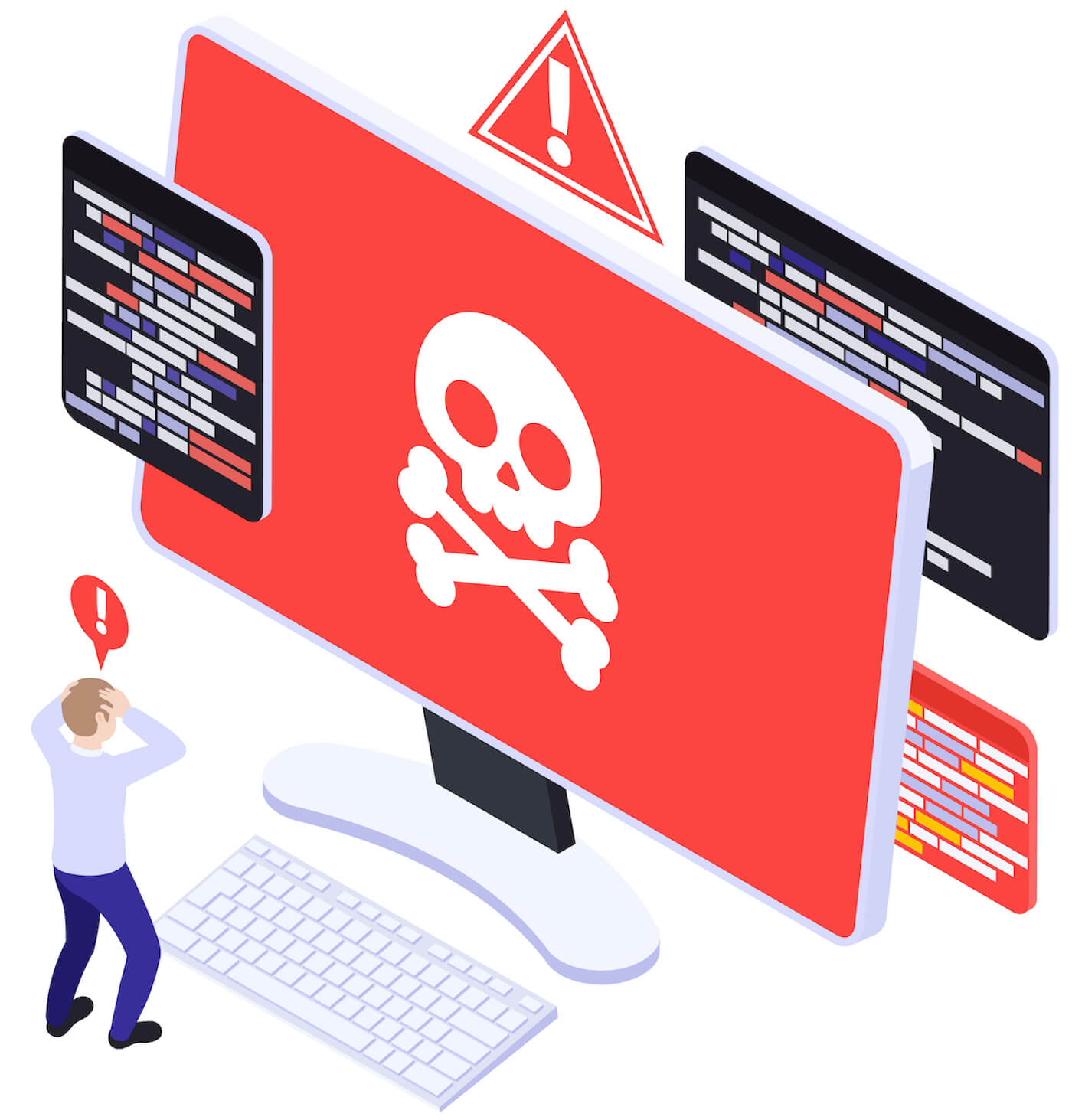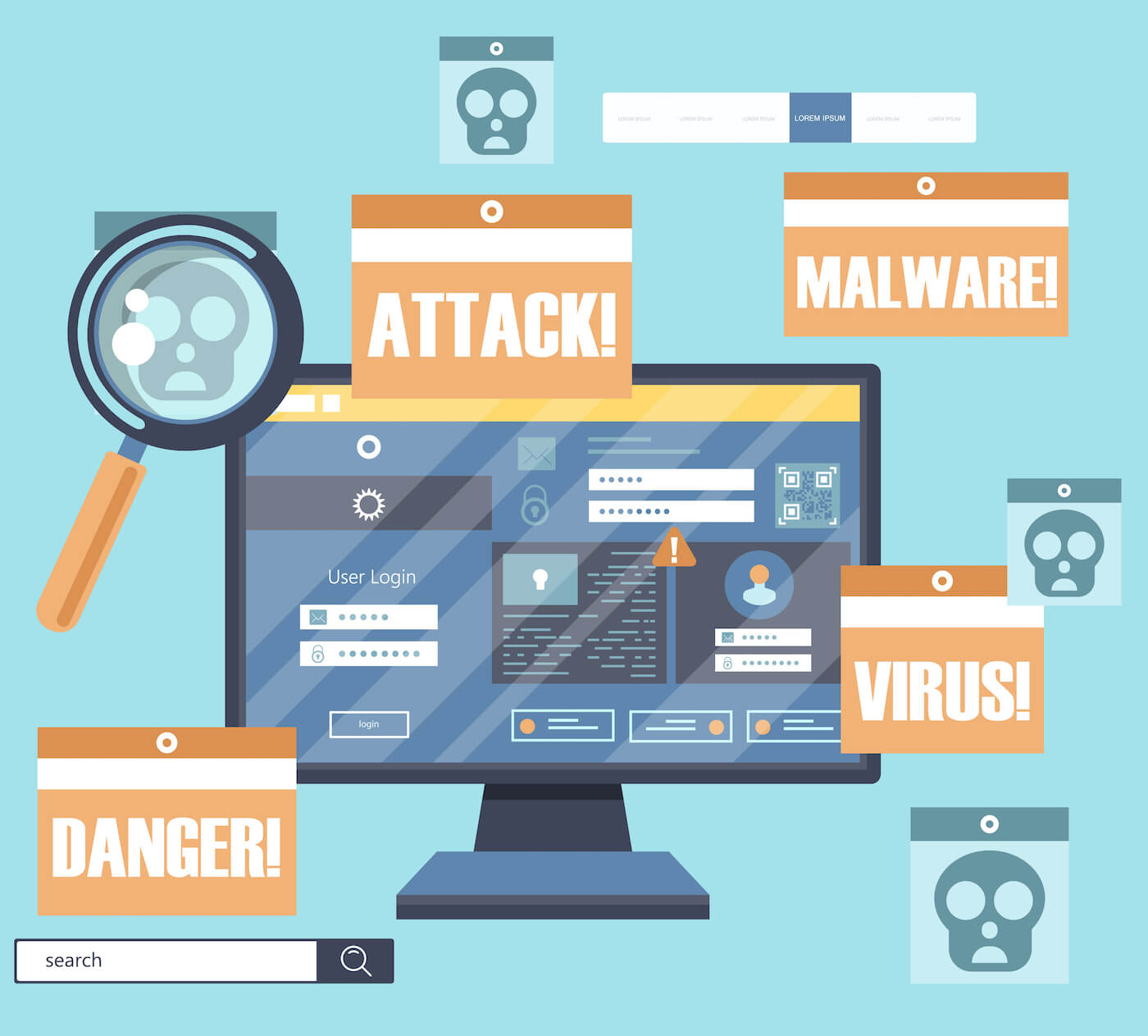7 Security Red Flags IT Often Miss
Keeping your company safe from security threats is a key part of a healthy organization. Unfortunately, with the rise of cybersecurity threats and new cyberattacks emerging each year, it can be difficult to spot and find security concerns risking the welfare of your business.
Luckily, there are red flags that a business owner, IT professional, or security manager can look out for when it comes to security. Not only should you have a firm security plan in place, but also keep these security red flags on your radar to ensure your important business information is kept safe.
7 Security Red Flags IT Often Miss

When it comes to important security red flags, these are the ones that often get overlooked, and they may surprise you!
1. You Get a Lot of Spam
Spamming is a technique of email phishing that threat actors use to try to take advantage of businesses through email. Spam emails can be very annoying, but, in general, you may be brushing this off as innocent but annoying. Unfortunately, spam emails are an indicator that your email filtering systems aren’t working effectively.
The more spam your business receives, the greater risk you and your team are at of being exposed to malicious spam and phishing scams, a social engineering technique to gain access to sensitive information.
Additionally, the deluge of spam emails makes it harder for your employees to identify spam and phishing attempts, which puts your company at greater risk for a phishing attack. Twenty percent of employees are likely to click on a phishing email link, risking your business falling victim to credential theft or malware.
If your inbox is regularly full of spam it also makes it harder to work. Connect your IT and security teams together to conduct a review of your organization’s emails to tighten up controls. Check to make sure your email is not routinely accepting email from all domains globally especially if you don’t conduct business globally, and adjust if this should not be the case.
2. You Have Poor Communication With Your Information Security Team
The IT department might focus on managing information technology systems, setting up technical workflows, and software. They aren’t always your #1 security team (and really, they shouldn’t be). If your IT and security teams are separate, be sure that they are in regular contact with each other over basic cybersecurity protocols, red flags, and annual updates, like employee training.
Your security team should be connecting with your IT department or managed services IT provider to share key metrics, concerns, and protocols. This should be a trust-building relationship, as one party may notice a cybersecurity breach before the other and can help resolve the matter quickly.
Set up regular meetings with your IT department, service provider, security team, and/or C-level executives to make sure you’re all on the same page.
3. Your Workforce is Lacking Security Awareness Training
With the rise in frequency and types of cybersecurity breaches that are available each year, your company needs to stay on top of it and provide security awareness training to your staff. Strong cybersecurity awareness training should not only occur regularly, but it also starts to infiltrate your company (in a good way), becoming a part of your culture.
This training will help your employees to identify dangerous spam emails, security alerts, and security breaches. And it should be used in hybrid workforces so that your employees notice security concerns both in the network and with in-office security controls, like who has network access, who is accessing company equipment, and more.
Not training your employees can result in a devastating attack. Focus on end-user security training and cybersecurity awareness to improve the staggering 69% of employees who can’t identify a suspicious email and who may fall victim to click-bait!
4. Your IT Department is Frequently Chaotic

Let’s be honest, it’s quite normal for work to feel relatively chaotic. This is due to the number of moving parts in any given business. However, chaos and busyness aren’t always signs of a busy workforce and could serve as a business distraction.
Your IT department (which again should be different from your security team) might also be routinely busy with IT emergencies altogether different from security threat emergencies, and it could mean that keeping your regular security system updates fall to the wayside. Over time, deferred work and strategic planning become technical debt and increase the number of vulnerabilities present in your workforce.
Take a moment to review your IT budget and identify if more can be done to improve the state of affairs here. Adequately funding your IT department and security team can ensure that your strategic objectives, like security and maintaining security in your hybrid workplace, are hit. Not only that, but we highly recommend installing a network-wide monitoring system, which can alert your security team to these critical vulnerabilities and breaches the moment they occur, and keep you abreast of other company concerns as well.
5. Your Data Security Budget is Merely a Line Item
Another key security red flag is simply that you’re not taking your security seriously enough. If your security budget is merely a line item in your accounting system, then this means that you aren’t taking the time to a) learn what needs to be done to ensure optimal security and b) not taking the risk and impact of a cybersecurity threat seriously.
Cybersecurity touches every single component of your business, and by funding it, you are given a greater chance to protect sensitive data, HR files, intellectual property, sensitive consumer data, applications, software, and your key products.
The frightening reality is that not many businesses spend enough on security. Luckily, you don’t have to spend a whole lot more to drastically improve your security system with monitoring software. While monitoring software should always be used with antivirus software, antimalware software, and firewall, among many others, an employee monitoring system can keep your data visibility high so that you see everything that goes on in your company.
From data movement to data being copied, deleted, or saved, you can keep your data safer with employee monitoring software. You can also be aware of suspicious log-in times, suspicious employee activity, and unauthorized user access.
6. You are Missing Key Security Updates
Security updates are in place for a reason. When a vulnerability is found in a security system, this is considered a security weakness and can be exploited by experienced hackers. On the first day that your vulnerability is found, it’s called a zero-day vulnerability and it can be very rare for a hacker to exploit this vulnerability.
It’s important to not miss these security updates, which are essentially code patches that help seal up the vulnerability. If you do, and it’s been a few weeks since you’ve updated your security, then you’re putting your company at risk for greater security threats.
Keep your company more secure with monitoring software that can detect cyber threats in your system before your IT and security department does, which is especially important if you fall on your updates.
7. Your Special Access and Visibility (As an Executive) Makes You a Target
Some businesses simply have executives, like yourself, or key members of the business who are visible to the public or have special access. These individuals are considered a higher target because they have unique access to company systems, information, and credentials. And statistics suggest that nearly 1 in 5 individuals in a company will have their credentials stolen. The chance it will be a high target individual makes this risk even higher.
It’s important to keep high visibility and special access individuals more secure than others because these individuals will be regularly subjected to phishing attacks, spear phishing, and even whaling attacks. This can risk credential theft but also identity theft for the high visibility individual and sensitive customer information.
To combat this, your program administrator should use extensive security measures like two-factor authentication, encryption, VPN access, company computers, and regular training. This will ensure that employee credentials will be hard to steal, and, even then, the hacker will have a harder time gaining access to the sensitive information the executive has access to.
Importance of Strong Security Defense System
The National Association of State Chief Information Officers (NASCIO) reports that cybersecurity remains the top priority for 2022. And, with the average cost of a data breach at $4.24 million in 2021, companies also experience long-tail costs of cyber attacks, like reputational damage, business disruption, lost sales, specialty IT remediation, and fines – all of which can plague an organization for years after an attack.
When a company suffers a cyber attack, there is a lot at stake that can be lost. Not only is your company’s reputation at risk, but with the cyber attack, you automatically lose your competitive edge. Additionally, you can lose money, time, and customer trust in the process.
It’s important to have a strong security defense system in place so that you don’t get hacked and risk your sensitive information being obtained by cyber criminals. Drastically improve your company’s security with the SoftActivity employee monitoring system for effective and comprehensive security tracking.
By SoftActivity Team.